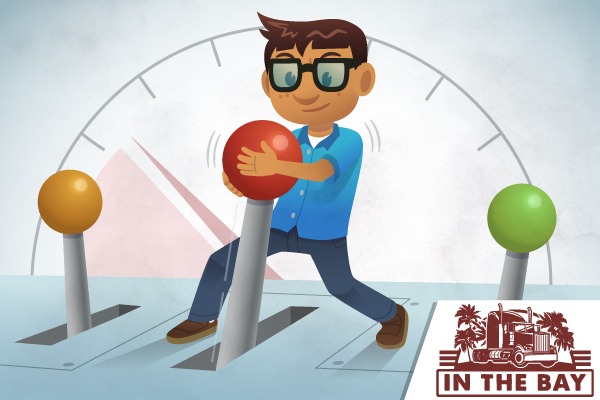In The Bay: The Three Levers of Shop Profitability

Have you ever felt frustrated while trying to make your shop more profitable?
Sure you have – just about everyone does!
Here’s something I tell a lot of owners: The key to higher profits is recognizing what you can and can’t control, and making the most of the former.
To that end, there are three levers you can pull for higher revenue:
- Charge more
- Pay less for things
- Maximize efficiency of what you already have.
For the purposes of this article, I’ll create an example shop named Karl’s Truck Repair. Now, Karl’s has three techs, a service manager, and an office manager. The labor rate is $85, the average parts markup is 30%, and the shop supplies are 5%. The shop’s overhead is about $12,000 per month, and techs are working 40 hours per week while billing 30. All in all, Karl’s makes about $1,700 a month in profit.
(Side Note: This is actually a pretty common scenario – often the owners are a married couple. The husband handles service and parts, and the wife handles the office. So they’re making wages as employees, but as owners they’re only making $1,700 a month.)
So let’s take this hypothetical shop and see how we can improve their bottom line by charging more, paying less, or being more efficient with what they already have.
CHARGING MORE
Let’s take a look at the parts markup of Karl’s Repair Shop. They’re only charging 30%. What if we increased that to 40? Boom, the profit goes up $1,100. That means profit goes up over $100 for every 1% increase in parts markup.
What about shop supplies? What if Karl’s charged 8% instead of 5%? Then their profit goes up another thousand bucks. Not bad.
(By the way, you should definitely be charging a market rate for shop supplies.)
Now, what about the labor rate? What if they charged $5 more? So instead of $85, they charge $90. The shop’s profit goes up to almost $4,000 per month. For every $1 more in labor rate, they get around $450 more in profit.
With all those changes put together, Karl’s profit goes up to about $6,000 per month. Definitely better, right?
Wait till you see what happens when you start paying less…
PAYING LESS
Let’s get one thing out of the way: We are NOT talking about paying techs less. You HAVE to pay them market rates, or even more, because techs are so hard to find.
But there are other areas where you can trim!
Besides payroll, your biggest expenses are going to be parts and overhead. In general, you want to keep your parts cost at about 25% of total revenue. Not 25% of parts revenue – 25% of total revenue. Less is even better.
But be careful! Because if you don’t also fix your parts markup, paying less for parts will actually decrease your profit. That’s because if the cost is lower, the selling price is also going to be lower. So make sure you fix your parts markup, too.
Karl’s is spending about 30% of revenue buying parts. If they can get that down to 25%, profit goes up $4,000. Remember, anything you can save on the cost side goes directly to the bottom line.
Nice, right?
Let’s move on to one other trick you can try.
MAKE THINGS MORE EFFICIENT
Here’s something to keep in mind: Efficiency isn’t charging more, or paying less. It’s doing more with what we already have.
Let’s say the Karl’s hasn’t made any of the above changes. They’ve still got three techs, each billing 30 hours a week and getting paid for 40 hours a week.
That’s 75% efficiency.
What would happen if each tech each billed five more hours a week?
Well, the shop’s profit goes up about $6,000.
And the customers probably didn’t even notice – well, they probably noticed getting their trucks back sooner, which is always a good thing.
It gets even better, though. When you add a fourth tech to your crew, profit doubles. Add a fifth tech, and it triples. And so on. Increasing efficiency is by far the best way to drive revenue for your shop.
So let’s combine all our changes: Charge more for labor, parts, and shop supplies. Pay less for parts. Get your techs billing five more hours a week. Add a couple more more techs.
Karl’s Repair Shop goes from $1,700 a month to $37,000 a month in profit.
That’s almost half a million per year.
If Karl’s expands to eight techs and adds a couple managers, it will approach the $700,000 mark. Add one more tech and make sure they’re all at 100% efficiency and this little shop is suddenly pulling in a million dollars.
Wouldn’t you say the owners deserve it?
Running a commercial repair shop is tough. But you know just as well as anyone the difference between working harder and working smarter. To that end, you can test your own shop’s numbers with our free ROI Tool and see how much more you could make by pulling one of the three levers.
By maximizing the efficiency of what you have, cutting certain costs, and charging more, you can boost your shop’s revenue and create a successful and rewarding business.

